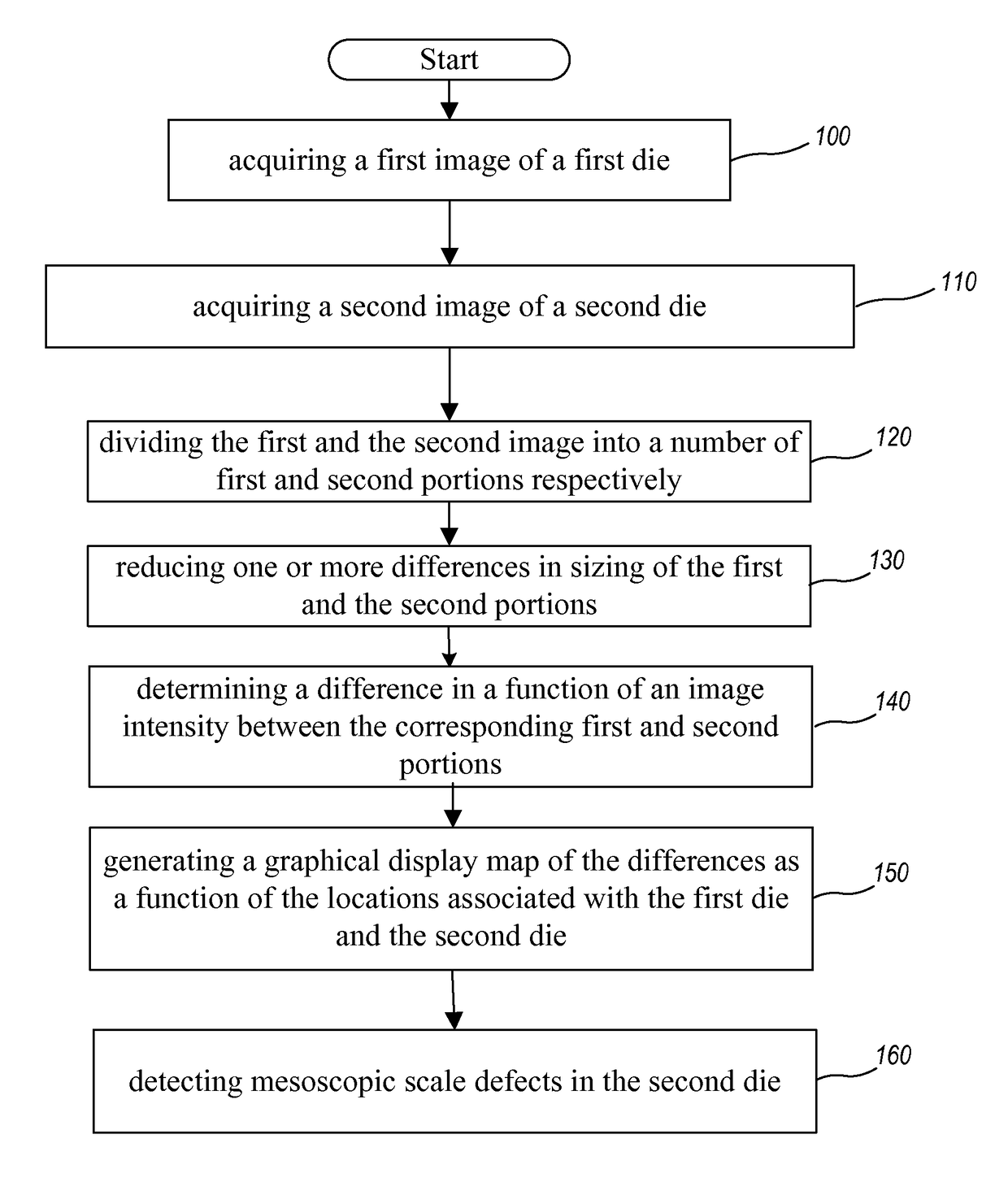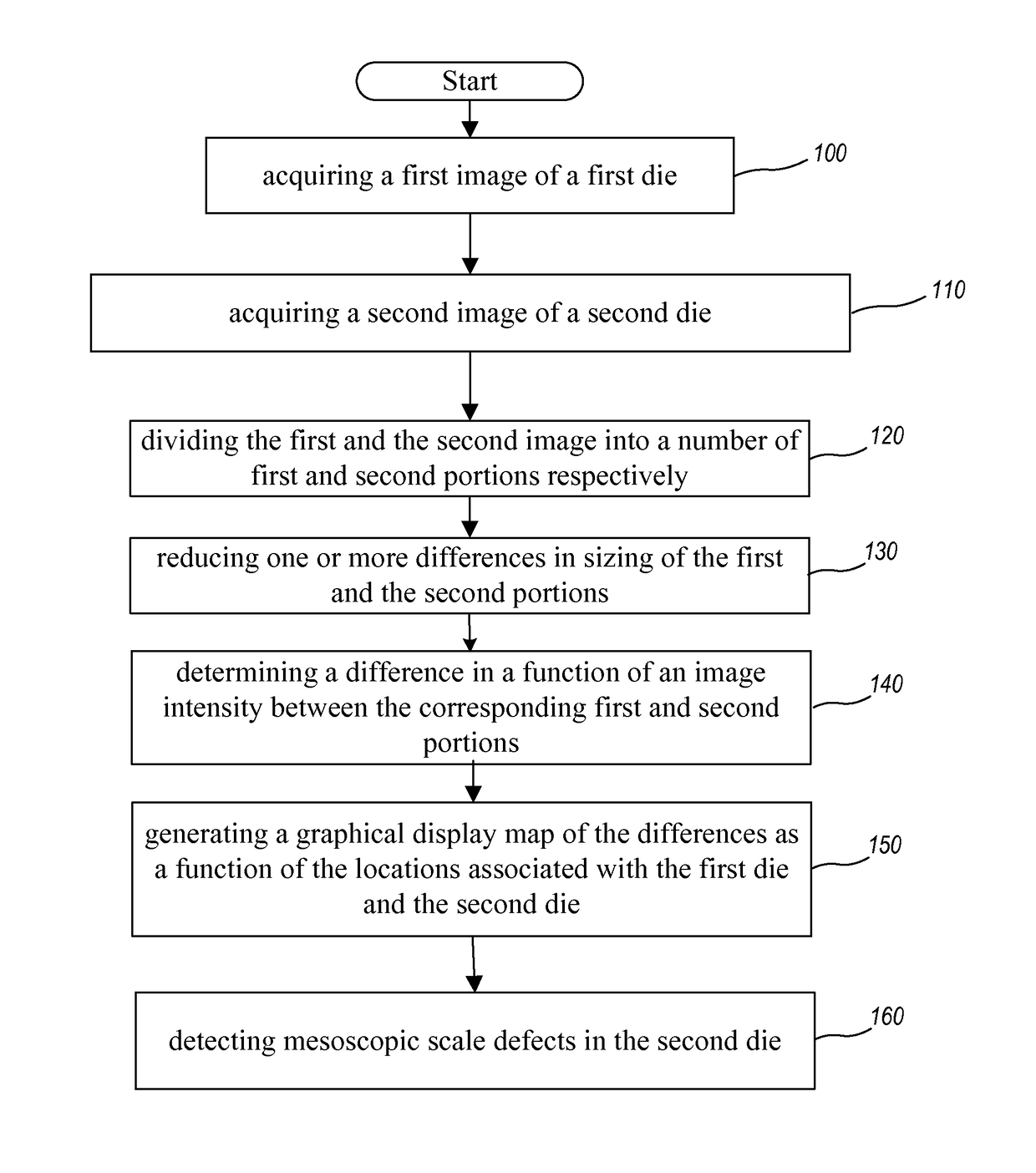Mesoscopic defect detection for reticle inspection
a technology of reticle and defect detection, applied in the field of detecting defects in reticles or photomasks, can solve the problems of existing methods that do not have the capability or sensitivity to detect defects, and the defect on a reticle or photomask is detrimental to the yield of semiconductor wafers in the semiconductor manufacturing process, so as to reduce the difference between the first and the second portion
- Summary
- Abstract
- Description
- Claims
- Application Information
AI Technical Summary
Benefits of technology
Problems solved by technology
Method used
Image
Examples
Embodiment Construction
Definitions
[0026]Unless defined otherwise, all technical and scientific terms used herein have the same meaning as commonly understood by one of ordinary skill in the art.
[0027]The term “connected” as used herein generally refers to pieces which may be joined or linked together.
[0028]The term “coupled” as used herein generally refers to pieces which may be used operatively with each other, or joined or linked together, with or without one or more intervening members.
[0029]The term “directly” as used herein generally refers to one structure in physical contact with another structure, or, when used in reference to a procedure, means that one process affects another process or structure without the involvement of an intermediate step or component.
[0030]The term “mesoscopic” as used herein generally refers to length scales on the order of 103 nm to 102 μm. For example herein there may be made reference to mesoscopic defects meaning defects on the order of 103 nm to 102 μm in the lateral...
PUM
 Login to View More
Login to View More Abstract
Description
Claims
Application Information
 Login to View More
Login to View More - R&D
- Intellectual Property
- Life Sciences
- Materials
- Tech Scout
- Unparalleled Data Quality
- Higher Quality Content
- 60% Fewer Hallucinations
Browse by: Latest US Patents, China's latest patents, Technical Efficacy Thesaurus, Application Domain, Technology Topic, Popular Technical Reports.
© 2025 PatSnap. All rights reserved.Legal|Privacy policy|Modern Slavery Act Transparency Statement|Sitemap|About US| Contact US: help@patsnap.com



